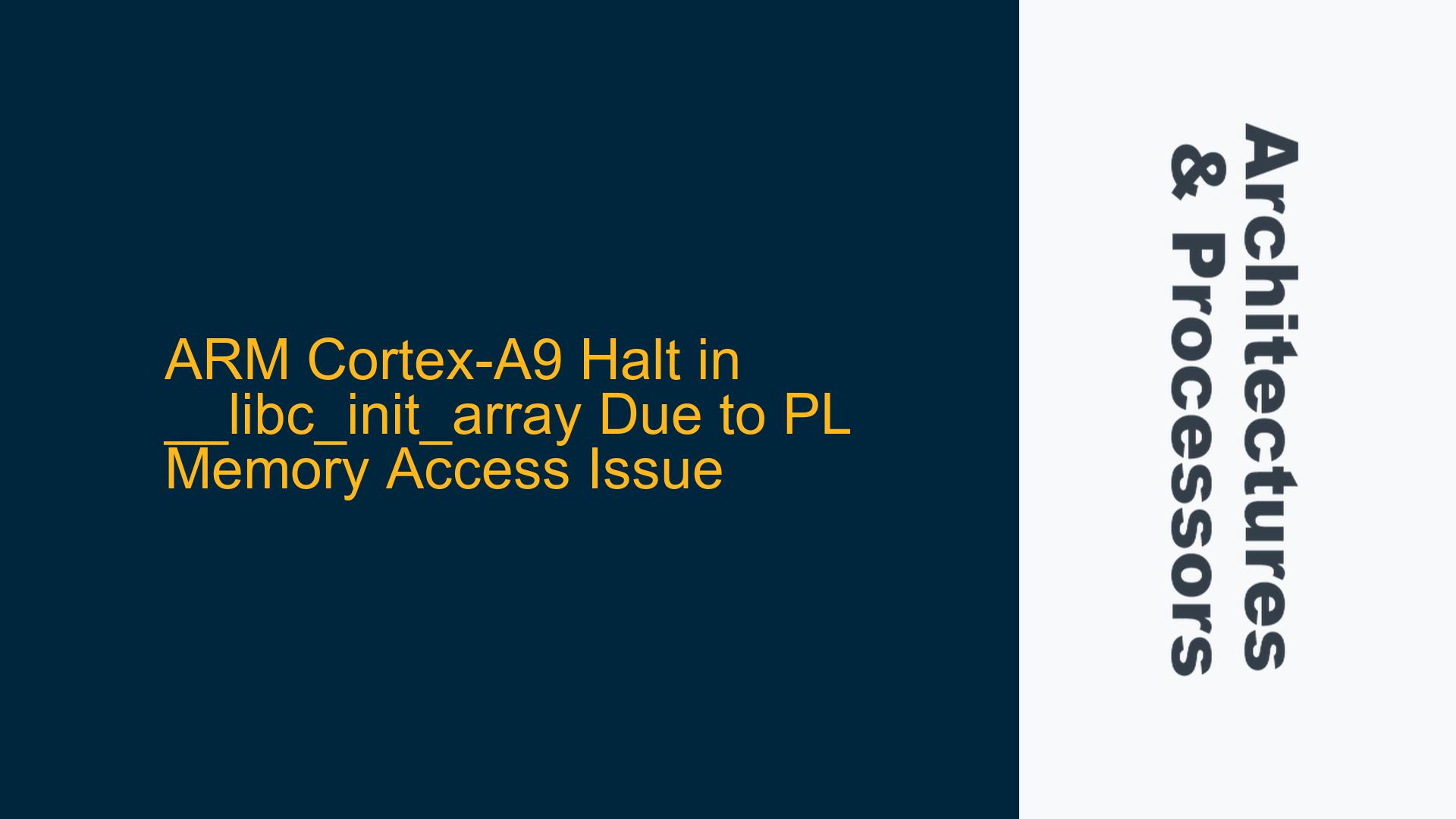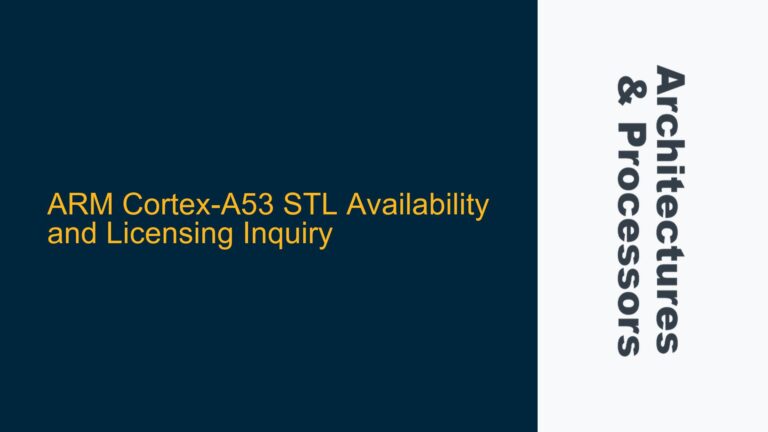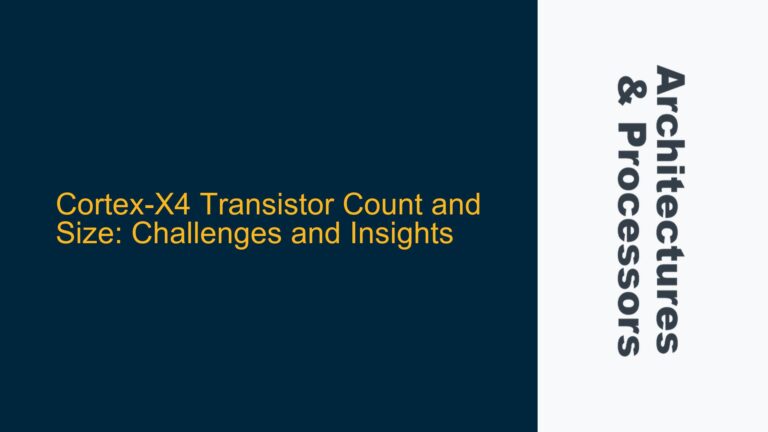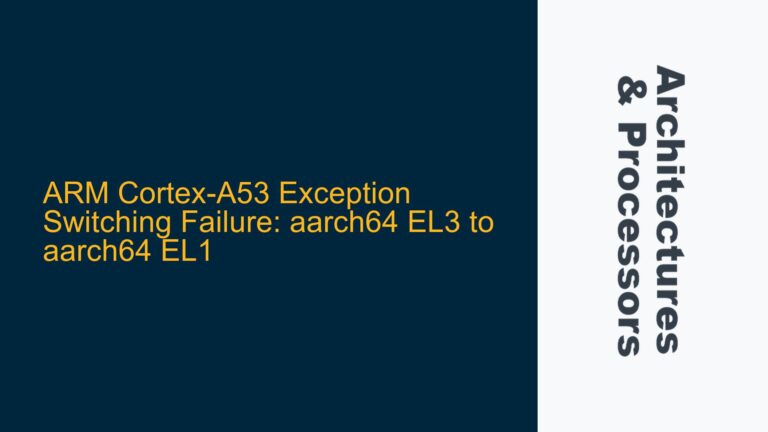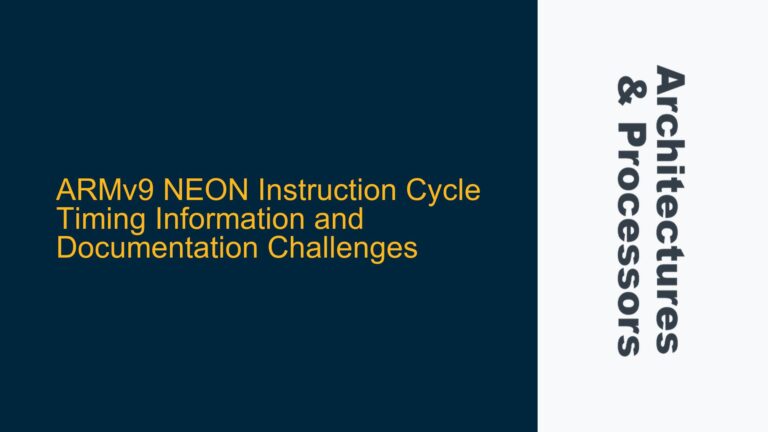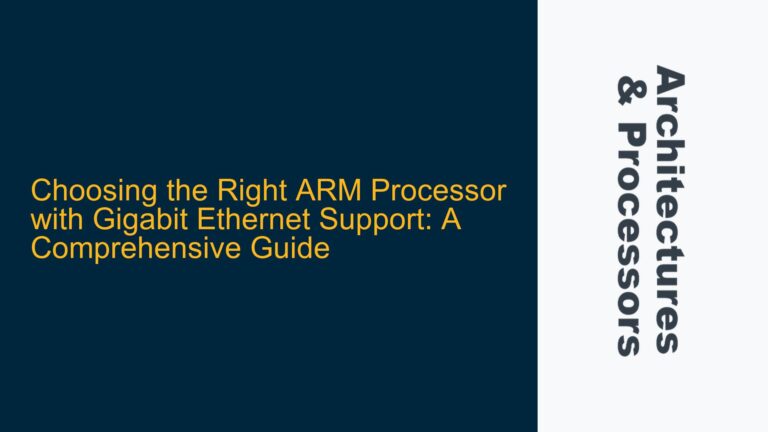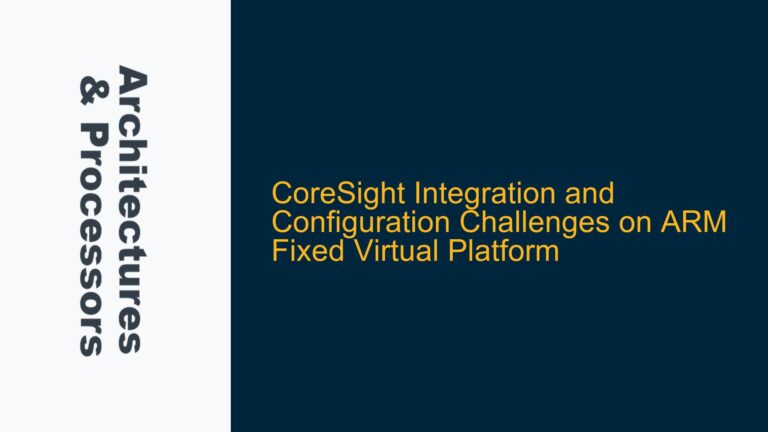ARM Cortex-A9 Processor Halting During __libc_init_array Execution
The issue at hand involves an ARM Cortex-A9 processor halting during the execution of the __libc_init_array function, specifically when attempting to execute a function pointer from the .init_array section. This behavior is observed on two out of three identical hardware setups, while the third operates as expected. The root cause is traced to an attempt to access a Programmable Logic (PL) memory address that is not accessible before the main function is entered. This results in a processor halt when the blx r3 instruction is executed, as the target address is invalid or inaccessible at this stage of initialization.
The __libc_init_array function is part of the C runtime initialization code, responsible for calling global constructors and initialization functions before main is invoked. The function iterates through the .init_array section, which contains function pointers to initialization routines. When the processor attempts to execute one of these function pointers, it halts because the target address is either invalid or points to a memory region that is not yet accessible.
This issue is particularly insidious because it manifests only on certain hardware setups, despite the software and linker scripts being identical across all devices. The discrepancy arises from subtle differences in hardware initialization or memory mapping, which can affect the accessibility of certain memory regions during the early stages of boot.
Memory Accessibility and Initialization Timing in Programmable Logic (PL)
The primary cause of the processor halt is the attempt to access a PL memory address before the PL is fully initialized or mapped into the memory space. The ARM Cortex-A9 processor, in this case, is part of a Zynq-7000 FPGA, which integrates a Processing System (PS) and Programmable Logic (PL). The PS includes the ARM Cortex-A9 cores, while the PL consists of configurable logic blocks that can be programmed to implement custom hardware functionality.
During the early stages of boot, the PS is responsible for initializing the system, including setting up memory controllers, configuring the PL, and loading the application code into DDR memory. However, if the PL is not fully initialized or if the memory mapping is not correctly configured, attempts to access PL memory addresses will result in a bus error or an undefined instruction exception, causing the processor to halt.
In this specific case, the .init_array section contains a function pointer that points to a PL memory address. When the __libc_init_array function attempts to execute this function pointer using the blx r3 instruction, the processor halts because the PL memory is not accessible at this stage. This issue is exacerbated by the fact that the memory mapping or initialization sequence may differ slightly between hardware setups, leading to inconsistent behavior.
The blx r3 instruction is a branch with link and exchange instruction, which is used to call a function whose address is stored in the r3 register. The instruction switches the processor to Thumb mode if the target address has the least significant bit set, and it stores the return address in the link register (lr). If the target address is invalid or inaccessible, the processor will generate an exception, leading to a halt.
Debugging and Resolving PL Memory Access Issues in Early Boot Stages
To debug and resolve this issue, a systematic approach is required to identify the root cause and implement a solution that ensures the PL memory is accessible when needed. The following steps outline the troubleshooting process:
Step 1: Verify Memory Mapping and Initialization Sequence
The first step is to verify the memory mapping and initialization sequence to ensure that the PL memory is correctly mapped and accessible during the early stages of boot. This involves reviewing the memory map configuration in the linker script and the initialization code in the FSBL (First Stage Boot Loader) or equivalent bootloader.
The linker script defines the memory regions and their attributes, including the base address, size, and access permissions. In this case, the .init_array section is located at 0x0030af50, and the function pointer that causes the halt is at 0x0030af84. The content of the .init_array section should be verified to ensure that all function pointers point to valid and accessible memory addresses.
The initialization sequence should also be reviewed to ensure that the PL is fully initialized before any attempts are made to access PL memory. This may involve modifying the bootloader or adding additional initialization code to ensure that the PL is ready before the application code is executed.
Step 2: Use JTAG Debugging to Identify the Faulting Instruction
JTAG debugging is a powerful tool for identifying the exact point at which the processor halts. By connecting a JTAG debugger to the target hardware, it is possible to halt the processor, inspect the registers, and step through the code to identify the faulting instruction.
In this case, the processor halts when executing the blx r3 instruction, where r3 contains the address 0x0023CB74. The JTAG debugger can be used to inspect the contents of the r3 register and verify that the address points to a valid and accessible memory location. If the address is invalid or points to an inaccessible memory region, the debugger can be used to trace back to the source of the address and identify why it is incorrect.
Step 3: Modify the Initialization Code to Delay PL Access
If the PL memory is not accessible during the early stages of boot, the initialization code should be modified to delay any attempts to access PL memory until the PL is fully initialized. This may involve moving the initialization of certain functions or data structures to a later stage in the boot process, after the PL is ready.
One approach is to modify the __libc_init_array function to skip any function pointers that point to PL memory until the PL is initialized. This can be done by adding a check to verify that the target address is accessible before executing the function pointer. If the address is not accessible, the function pointer can be skipped, and the initialization can be deferred until later.
Step 4: Implement Error Handling and Recovery Mechanisms
To prevent the processor from halting in the event of an invalid memory access, error handling and recovery mechanisms should be implemented. This can include adding exception handlers to catch bus errors or undefined instruction exceptions and take appropriate action, such as logging the error and continuing execution.
In this case, an exception handler can be added to catch the exception generated by the blx r3 instruction and log the error. The handler can then skip the faulting function pointer and continue with the rest of the initialization process. This approach allows the system to recover from the error and continue booting, even if some initialization functions are not executed.
Step 5: Validate the Solution Across All Hardware Setups
Once the issue has been identified and a solution has been implemented, it is important to validate the solution across all hardware setups to ensure consistent behavior. This involves testing the modified software on all three hardware setups and verifying that the processor no longer halts during the __libc_init_array function.
The validation process should include a thorough review of the memory mapping and initialization sequence, as well as testing with different configurations and scenarios to ensure that the solution is robust and reliable. Any discrepancies or issues that arise during validation should be addressed and resolved before the software is deployed.
Conclusion
The issue of the ARM Cortex-A9 processor halting during the execution of the __libc_init_array function is a complex problem that requires a thorough understanding of the memory mapping, initialization sequence, and hardware-software interaction. By following the steps outlined above, it is possible to identify the root cause of the issue and implement a solution that ensures the PL memory is accessible when needed, preventing the processor from halting and allowing the system to boot successfully.
The key to resolving this issue lies in careful debugging, systematic analysis, and a deep understanding of the hardware and software interactions. By taking a methodical approach and leveraging tools such as JTAG debugging, it is possible to identify and resolve even the most subtle and challenging issues in embedded systems.
